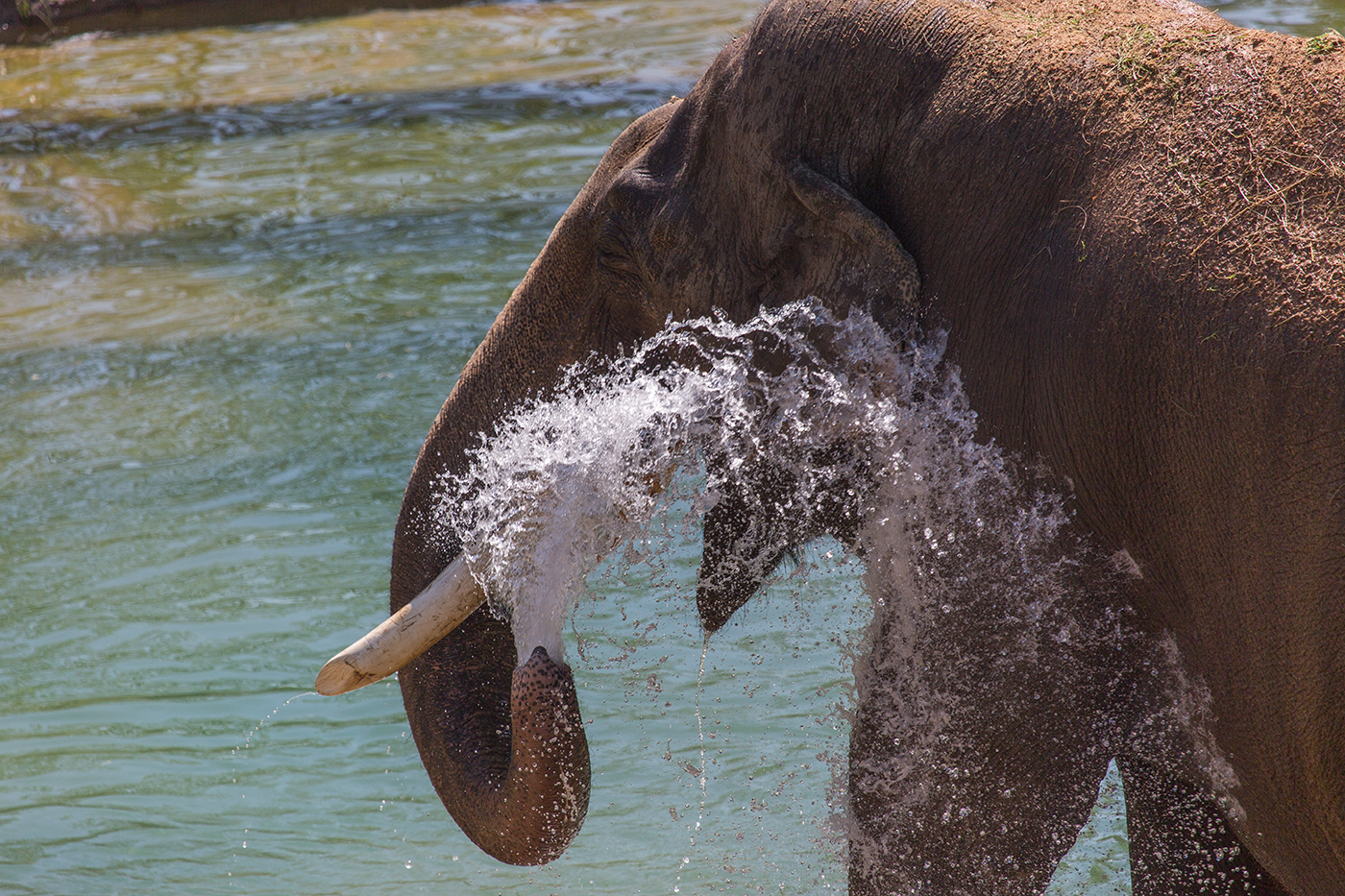How the Zoo Keeps Animals Healthy in Extreme Heat

On hot summer days, visitors are likely to see the Asian elephants keeping cool in the outdoor pools inside their habitat.
Animal teams at the Smithsonian’s National Zoo and Conservation Biology Institute provide expert care for each of the Zoo’s residents every day of the year. But when heat indexes soar over 90 or even 100 degrees, staff work extra hard to make sure the animals are healthy and safe on hot summer days.
In cases of extreme heat, keepers look for physical signs an animal is not responding to heat, such as excessive panting or lethargy, and take appropriate measures to cool the animal down if such symptoms are observed.
Many animals at the Zoo live in temperature-controlled indoor environments that provide refuge from the heat. All of the Zoo’s outdoor exhibits have cool indoor holding areas and hiding spaces that the animals can choose to enter whenever they want.
For the animals who do choose to stay outdoors in hot weather, Zoo staff provide plenty of choices that allow the animals to choose the best ways to stay comfortable. Trees, bushes, and shade structures are features in many habitats, and all exhibit areas have cool water for the animals to stay hydrated. And in many cases, the keepers will take proactive steps to keep the animals refreshed and comfortable when the mercury rises, including:
- Icy treats: Large carnivores, such as Andean bears and tigers, are presented with ice blocks filled with frozen chunks of meat. These enrichment items keep the animals cool while also offering a fun challenge to overcome.
- Fruitsicles: Herbivores like the Western lowland gorillas and Asian elephants are offered vegetarian fruitsicles, which are ice cakes filled with frozen fruit and diluted fruit juice.
- Freshwater pools: Animals from temperate regions, like the Bird House’s turkeys and sandhill cranes, have outdoor habitats that are designed with species-appropriate ways to stay cool, like freshwater pools or wallows. On hot days, the animals take frequent dips, using the evaporating water to draw heat from their bodies.
- Water misters and hoses: Many of our animals, such as the alpacas at Kids’ Farm, enjoy being gently sprayed with sprinklers, misters, and hoses! Watch a video of the alpacas staying cool with a misting.
- Shade and other natural choices: Animals from tropical regions, like the clouded leopards or sloth bears, are acclimated to the heat...although many of them choose to spend the hottest part of the day taking a snooze. Often, all they need to do to stay cool is lay down in a shady spot.
